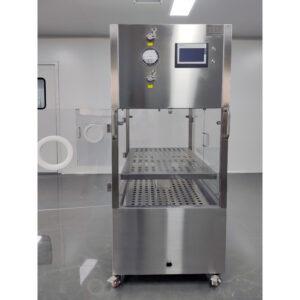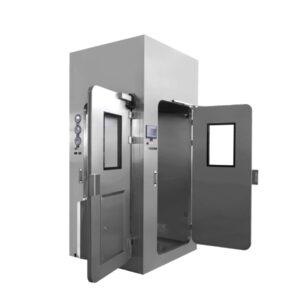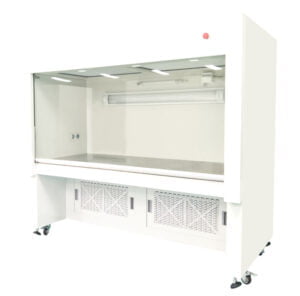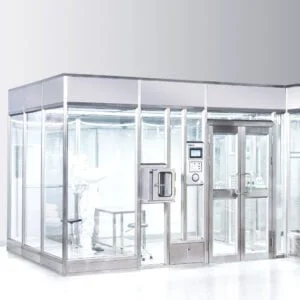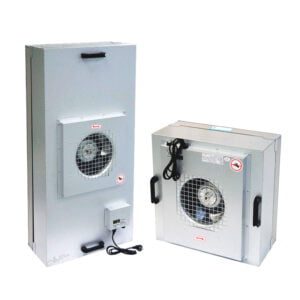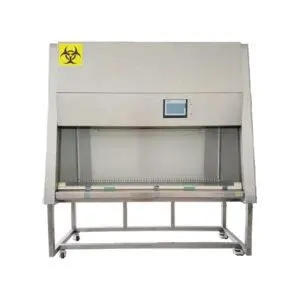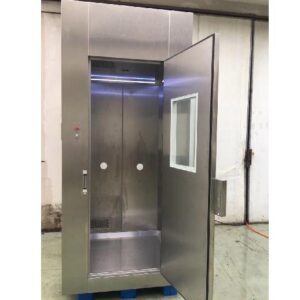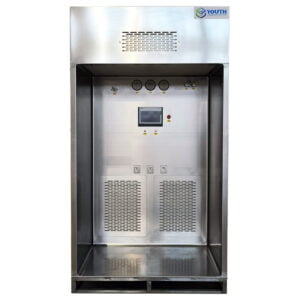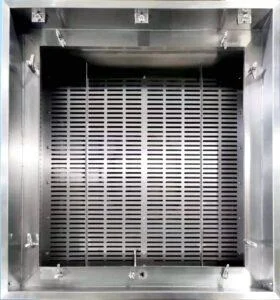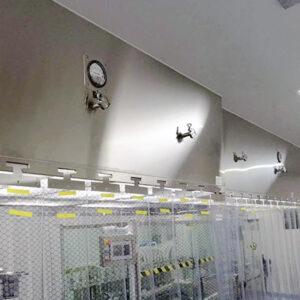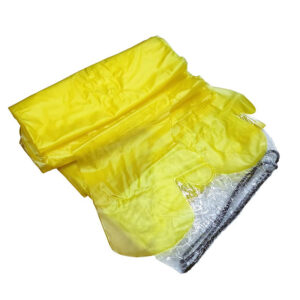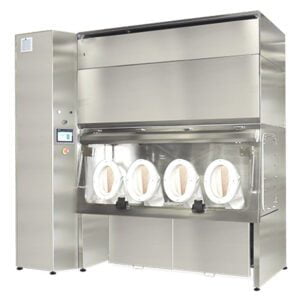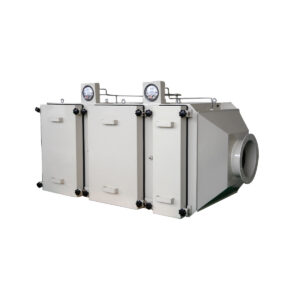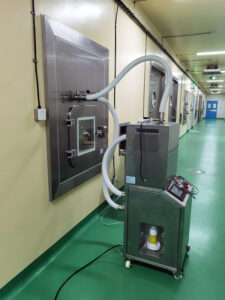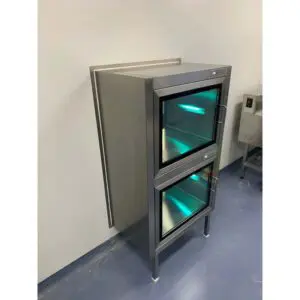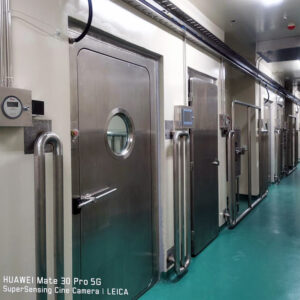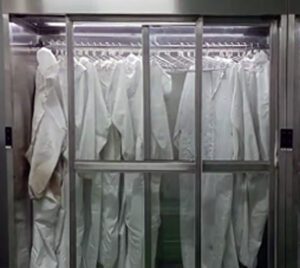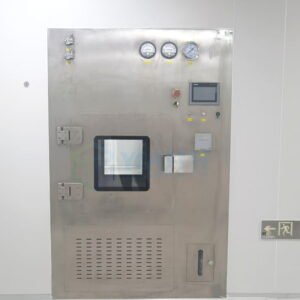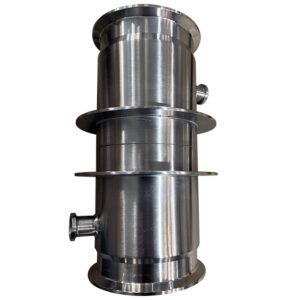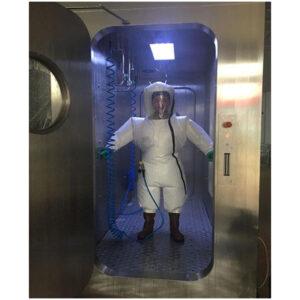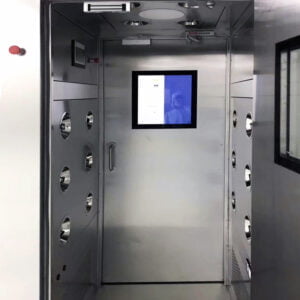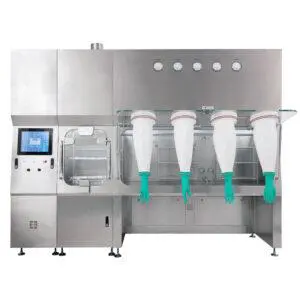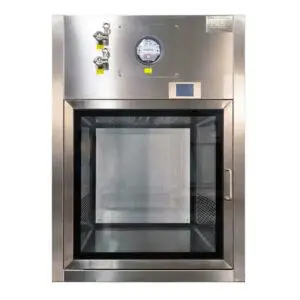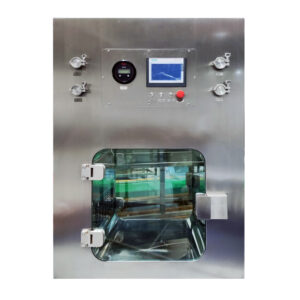In the world of sterilization, two powerful contenders have emerged as frontrunners for effective decontamination: Vaporized Hydrogen Peroxide (VHP) and Dry Hydrogen Peroxide (DHP). As healthcare facilities, pharmaceutical companies, and research laboratories strive for the highest standards of cleanliness and safety, choosing the right sterilization method has become increasingly crucial.
This article delves into the intricacies of VHP and DHP sterilization techniques, comparing their efficacy, applications, and limitations. We'll explore the science behind these methods, their impact on various materials, and their role in maintaining sterile environments. By understanding the strengths and weaknesses of each approach, professionals can make informed decisions to ensure optimal sterilization results in their specific contexts.
From the basic principles of hydrogen peroxide-based sterilization to the latest advancements in technology, we'll cover everything you need to know about VHP and DHP. Whether you're a healthcare professional, a laboratory manager, or simply curious about cutting-edge sterilization techniques, this comprehensive guide will provide valuable insights into these two powerful methods.
As we embark on this exploration of VHP and DHP sterilization, it's important to note that both techniques have their place in the arsenal of modern decontamination methods. The choice between them often depends on specific requirements, facility constraints, and the nature of the items being sterilized. Let's dive into the world of hydrogen peroxide sterilization and uncover the key factors that can help you choose the right method for your needs.
"Effective sterilization is the cornerstone of safety in healthcare and research environments. VHP and DHP represent cutting-edge solutions that offer rapid, low-temperature sterilization with minimal residue, making them invaluable tools in the fight against harmful microorganisms."
How do VHP and DHP differ in their sterilization mechanisms?
At the core of both VHP and DHP sterilization methods lies the powerful oxidizing agent, hydrogen peroxide. However, the way this compound is utilized in each technique differs significantly, leading to unique advantages and applications.
Vaporized Hydrogen Peroxide (VHP) sterilization involves the gaseous form of hydrogen peroxide, typically at concentrations between 30% and 35%. This vapor is introduced into a sealed chamber or area, where it rapidly disperses and comes into contact with surfaces, penetrating even hard-to-reach crevices. The oxidizing power of VHP effectively destroys microorganisms by breaking down their cellular structures.
On the other hand, Dry Hydrogen Peroxide (DHP) utilizes a continuous, low-level concentration of hydrogen peroxide gas, usually around 0.1 parts per million (ppm). This method relies on specialized devices that convert ambient humidity into hydrogen peroxide vapor, maintaining a constant presence of the sterilizing agent in the air and on surfaces.
The fundamental difference lies in the concentration and application method: VHP uses higher concentrations in controlled, cyclic exposures, while DHP maintains a constant, low-level presence in the environment.
"VHP sterilization offers rapid, deep penetration and is ideal for enclosed spaces and equipment, while DHP provides continuous, ambient sterilization suitable for occupied areas and ongoing contamination control."
| Feature | VHP | DHP |
|---|---|---|
| Concentration | 30-35% | ~0.1 ppm |
| Application | Cyclic, enclosed | Continuous, ambient |
| Duration | Short cycles (minutes to hours) | Ongoing |
| Area coverage | Sealed chambers or rooms | Open spaces |
What types of microorganisms can VHP and DHP effectively eliminate?
Both VHP and DHP have demonstrated impressive efficacy against a wide range of microorganisms, including bacteria, viruses, fungi, and spores. However, their effectiveness can vary depending on the specific conditions and application methods.
VHP sterilization is known for its broad-spectrum antimicrobial activity. It has been proven effective against bacterial spores, which are typically the most resistant forms of microbial life. This makes VHP particularly valuable in healthcare settings where eliminating highly resistant pathogens is crucial.
DHP, while generally less potent due to its lower concentration, still offers significant antimicrobial properties. It is particularly effective against vegetative bacteria and enveloped viruses, making it an excellent choice for continuous environmental disinfection.
Research has shown that both methods can achieve impressive log reductions in microbial populations, with VHP often achieving higher levels of sterilization in shorter time frames.
"VHP sterilization has demonstrated a 6-log reduction in bacterial spores within minutes, while DHP has shown continuous suppression of microbial growth in ambient environments over extended periods."
| Microorganism Type | VHP Efficacy | DHP Efficacy |
|---|---|---|
| Bacterial Spores | High | Moderate |
| Vegetative Bacteria | High | High |
| Viruses | High | High (especially enveloped) |
| Fungi | High | Moderate to High |
How do material compatibility concerns differ between VHP and DHP?
Material compatibility is a crucial consideration when choosing a sterilization method, as certain materials can be sensitive to oxidizing agents like hydrogen peroxide. Both VHP and DHP have their own sets of considerations in this regard.
VHP sterilization, due to its higher concentration of hydrogen peroxide, can be more aggressive on certain materials. However, its short exposure times often mitigate potential damage. VHP is generally compatible with a wide range of materials, including metals, plastics, and electronics. It's particularly useful for sterilizing heat-sensitive items that cannot withstand traditional steam sterilization.
DHP, with its lower concentration, tends to be gentler on materials over time. This makes it suitable for continuous use in environments with sensitive equipment or furnishings. However, the long-term exposure to even low levels of hydrogen peroxide should be considered for certain materials.
It's important to note that both methods can potentially cause oxidation of certain metals over time, and some plastics may experience degradation with repeated exposure. Always consult manufacturer guidelines and conduct compatibility tests when introducing new items to these sterilization methods.
"While VHP offers rapid sterilization with minimal material impact due to short exposure times, DHP provides a gentler, continuous approach that may be preferable for long-term use in sensitive environments."
| Material Type | VHP Compatibility | DHP Compatibility |
|---|---|---|
| Stainless Steel | High | High |
| Aluminum | Moderate (may oxidize) | High |
| Plastics (general) | High | High |
| Electronics | High (when sealed) | Moderate to High |
| Fabrics | Moderate | High |
What are the space and equipment requirements for implementing VHP vs. DHP?
The implementation of VHP and DHP sterilization systems can vary significantly in terms of space requirements and necessary equipment, which can be a decisive factor for many facilities.
VHP sterilization typically requires dedicated equipment, including a hydrogen peroxide vaporizer and, in many cases, a sealed chamber or room. These systems can range from small, portable units suitable for sterilizing individual pieces of equipment to large, built-in systems capable of decontaminating entire rooms or facilities. The 'Portable Decontamination VHP Generator Unit' offered by (YOUTH) is an excellent example of a versatile VHP system that balances efficacy with portability.
DHP systems, on the other hand, are generally more compact and can be integrated into existing HVAC systems or deployed as standalone units. They don't require sealed spaces and can operate continuously in occupied areas, making them easier to implement in many settings without significant modifications to existing infrastructure.
Both systems require proper ventilation and safety measures to manage hydrogen peroxide levels and ensure operator safety. VHP systems often need more robust safety protocols due to the higher concentrations used.
"VHP systems offer powerful, targeted sterilization but may require more dedicated space and equipment, while DHP systems provide flexible, continuous disinfection with minimal spatial requirements."
| Feature | VHP System | DHP System |
|---|---|---|
| Size | Variable (portable to room-sized) | Compact |
| Installation | May require dedicated space | Easily integrated |
| Ventilation Needs | High | Moderate |
| Portability | Varies by model | Generally high |
How do VHP and DHP compare in terms of cycle time and throughput?
Cycle time and throughput are critical factors in choosing a sterilization method, especially in high-volume or time-sensitive environments such as healthcare facilities and pharmaceutical production lines.
VHP sterilization typically operates in cycles, with each cycle lasting anywhere from 30 minutes to several hours, depending on the size of the area or items being sterilized. The cycle includes phases for conditioning, sterilization, and aeration. While the actual sterilization phase can be relatively short, the entire process, including preparation and aeration, can take longer. However, VHP offers the advantage of rapid sterilization for batch processes and can handle large volumes effectively.
DHP, being a continuous process, doesn't have traditional cycles. Instead, it provides ongoing disinfection at a lower intensity. While it may not achieve the same level of sterilization as VHP in a short time frame, its continuous nature means that it's always working to reduce microbial loads in the environment. This can be particularly beneficial in areas with constant foot traffic or potential for recontamination.
The choice between VHP and DHP in terms of cycle time and throughput often depends on the specific application. VHP is typically preferred for batch sterilization of equipment or rooms that can be sealed off, while DHP is ideal for maintaining a consistently low microbial load in occupied spaces.
"VHP offers rapid, high-level sterilization in discrete cycles, making it ideal for batch processes, while DHP provides continuous, lower-level disinfection that can maintain cleanliness in high-traffic areas over extended periods."
| Aspect | VHP | DHP |
|---|---|---|
| Cycle Duration | 30 min – several hours | Continuous |
| Sterilization Level | High | Moderate |
| Recontamination Risk | Low (post-cycle) | Continuously mitigated |
| Suitability for High Traffic | Limited | High |
What are the safety considerations for operators and occupants when using VHP vs. DHP?
Safety is paramount when implementing any sterilization system, and both VHP and DHP have specific considerations that must be addressed to protect operators and occupants.
VHP sterilization, due to its use of high concentrations of hydrogen peroxide, requires strict safety protocols. Operators must be trained in proper handling procedures and use appropriate personal protective equipment (PPE). Areas undergoing VHP treatment must be completely sealed and evacuated of all personnel. After the sterilization cycle, a thorough aeration period is necessary to ensure that hydrogen peroxide levels have decreased to safe levels before re-entry.
DHP systems, operating at much lower concentrations, are generally considered safer for use in occupied spaces. However, long-term exposure should still be monitored, particularly for individuals with respiratory sensitivities. Many DHP systems are designed to maintain hydrogen peroxide levels well below occupational exposure limits set by regulatory agencies.
Both methods require proper ventilation systems to manage hydrogen peroxide levels effectively. Regular monitoring and maintenance of these systems are crucial to ensure ongoing safety.
"While VHP requires stringent safety measures and temporary area evacuation, DHP offers a safer profile for continuous use in occupied spaces, though long-term exposure should still be monitored."
| Safety Aspect | VHP | DHP |
|---|---|---|
| Operator PPE Requirements | High | Low to Moderate |
| Area Evacuation Needed | Yes | No |
| Safe Re-entry Time | After aeration (variable) | Immediate |
| Continuous Exposure Risk | Low (cyclic use) | Low (at proper levels) |
How do environmental factors affect the efficacy of VHP and DHP sterilization?
Environmental factors play a significant role in the effectiveness of both VHP and DHP sterilization methods, and understanding these influences is crucial for optimal implementation.
VHP sterilization is highly sensitive to temperature and humidity. The ideal conditions typically involve temperatures between 20-30°C (68-86°F) and relative humidity levels around 30-40%. Higher humidity can lead to condensation of the hydrogen peroxide vapor, potentially reducing its effectiveness and leaving residues. Conversely, very low humidity can decrease the vapor's ability to penetrate and kill microorganisms effectively.
DHP systems, while generally more forgiving, also perform best within certain environmental parameters. They often rely on ambient humidity to generate hydrogen peroxide vapor, so extremely dry conditions can limit their efficacy. However, they are less sensitive to temperature fluctuations compared to VHP systems.
Both methods can be affected by the presence of organic matter or certain chemicals in the environment, which can react with hydrogen peroxide and reduce its sterilizing power. Regular cleaning and preparation of areas or items to be sterilized are essential for both methods.
Air flow and circulation patterns within a space can significantly impact the distribution and effectiveness of both VHP and DHP. Proper consideration of these factors during system design and implementation is crucial for ensuring comprehensive coverage.
"VHP sterilization requires careful control of temperature and humidity for optimal efficacy, while DHP systems are more adaptable but still benefit from stable environmental conditions. Both methods necessitate clean, well-prepared surfaces for maximum effectiveness."
| Environmental Factor | Impact on VHP | Impact on DHP |
|---|---|---|
| Temperature | High | Moderate |
| Humidity | High | Moderate to High |
| Organic Matter | High | Moderate |
| Air Circulation | Moderate | High |
Conclusion
In the realm of advanced sterilization technologies, both Vaporized Hydrogen Peroxide (VHP) and Dry Hydrogen Peroxide (DHP) stand out as powerful tools in the fight against harmful microorganisms. Each method offers unique advantages and challenges, making them suitable for different applications and environments.
VHP sterilization excels in providing rapid, high-level decontamination for enclosed spaces and equipment. Its ability to achieve deep penetration and eliminate even the most resistant microorganisms makes it invaluable in healthcare settings, pharmaceutical manufacturing, and research laboratories. However, it requires careful control of environmental conditions and stringent safety protocols.
DHP, on the other hand, offers a continuous, low-level approach to disinfection that can be safely implemented in occupied spaces. Its ability to maintain a consistently low microbial load makes it ideal for high-traffic areas and environments where ongoing contamination control is crucial. While it may not achieve the same level of sterilization as VHP in short time frames, its gentle, persistent action provides significant benefits in many settings.
The choice between VHP and DHP ultimately depends on specific needs, facility constraints, and the nature of the items or areas to be sterilized. Factors such as material compatibility, space requirements, cycle time, safety considerations, and environmental influences all play crucial roles in determining the most appropriate method.
As sterilization technologies continue to evolve, both VHP and DHP are likely to see further advancements and refinements. The integration of these methods with other technologies, such as UV light or advanced filtration systems, may lead to even more effective and versatile sterilization solutions in the future.
In conclusion, both VHP and DHP have earned their places as valuable tools in the arsenal of modern sterilization techniques. By understanding their strengths, limitations, and optimal applications, professionals can make informed decisions to ensure the highest standards of cleanliness and safety in their respective fields.
External Resources
Comparative evaluation of the microbicidal activity of low-temperature sterilization technologies – This study compares the microbicidal activity of various low-temperature sterilization methods, including VHP, providing insights into their efficacy and safety margins.
Vaporized Hydrogen Peroxide (VHP) sterilization – This white paper discusses the use of VHP as an alternative to ethylene oxide sterilization, detailing its advantages and limitations.
Ionized Hydrogen Peroxide vs. Vaporized Hydrogen Peroxide – This article compares the efficacy, safety, and practical applications of ionized hydrogen peroxide and vaporized hydrogen peroxide sterilization methods.
Other Sterilization Methods | Infection Control – CDC – The CDC provides an overview of various sterilization methods, including VHP, discussing its advantages and limitations.
Medical Device Sterilization: Methods Explained, Compared – This article explains different sterilization methods for medical devices, including VHP and hydrogen peroxide plasma sterilization.
Related Contents:
- Vaporized Hydrogen Peroxide vs Traditional Sterilization: A Comprehensive Analysis
- The Science of Vaporized Hydrogen Peroxide Sterilization
- The Essentials of VHP Sterilization
- Vaporized Hydrogen Peroxide Sterilization: Principles and Applications
- Environmental Impact of VHP Sterilization in Cleanrooms
- The Environmental Impact of VHP Sterilization in Cleanrooms
- Vaporized Hydrogen Peroxide Sterilization in Biosafety Equipment
- Vaporized Hydrogen Peroxide Sterilization in Healthcare
- VHP Sterilization: Ensuring Safety in Healthcare Settings

